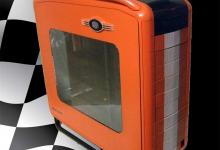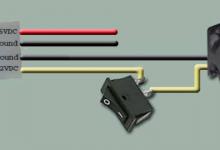Plexiglass Basics: What you need to know
Drilling
A variable speed drill seems to work best and what ever size of hole you want to drill always have sharp bits. A dull bit can melt the plexi or cause a chip, crack or splinter. There are different types of bits available that work well in plastics. These include standard high-speed, step, chamber and hole saw bits.

High-speed bits come in many sizes, and in sets. Good for small and pilot holes.

Step bit(top) Also under the name Unibit with several sizes in steps of 1/16" on one bit.
Chamber bit(bottom) An angled bit made for cutting for flathead screws like fan screws.

Hole saw bits An arbor (shaft with a center bit) and a round saw to cut large holes. The arbor can used with several saws for different holes. A must do is using scrap wood to support the piece being drilled. This will help keep the plastic from chipping and protect the bits from damage. For any size hole drill a small pilot hole first so that larger bits will not move off center while drilling.

Pilot holes

Finished holes
When drilling make sure the drill is angled to the correct angle you want for the finished hole. Being a little off can make it hard or next to impossible to get things to align during assembly. Use very little pressure as too much can cause a chip or crack. With larger holes using masking tape on both sides in the area being drilled, this will help against cracking. Sometimes running a holesaw in reverse on the plexi is best, less chance of cracking and you can run it really fast.


